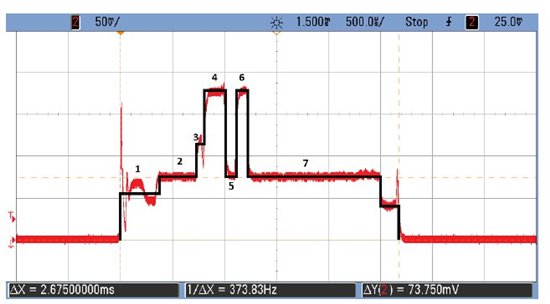I'm new to Bluetooth Low-Energy, and I'm trying to work out power budget. Application Note 092 does a great job of showing the current draw in various stages of a connection.
You can work out that this event uses 22.0 uAs of charge. So if we had one of these per second, we'd be pulling 22uA average.
Elsewhere in the app note, it says PM3 uses only 0.4uA and PM2 uses 0.9uA. The difference is PM2 allows a timer to run; PM3 requires a hardware interrupt to wakeup.
I'm hoping someone knowledgeable about Bluetooth can let me know how many transactios of how much data are required to establish a connection. I imagine all transactions will require about the same time and current in each stage except for the RX and TX stages.
My application will have infrequent transactions, so current in idle (e.g. PM3) may predominate in my power budget. (The application requires a battery powered device with a tight power budget to talk to a line-powered device.) I'm trying to compare the CC2541 SoC (which has an on-board 8051 capable of running the stack) and CC2564 (which is "just" the Bluetooth controller and radio).
CC2564's datasheet talks about "deep-sleep" and and "shut-down".
I can't find info about what deep-sleep mode is about. It doesn't make intuitive sense that these modes should have a higher current draw than PM2, which leaves a counter running, on a SoC. I would expect the sleep numbers to be lower since CC2564 is not a SoC with a processor running the stack. Is CC2541 SoC just amazingly good in terms of current draw during sleep compared to CC2564?
Can someone help me understand how much power budget I can except the battery-powered side need to establish a connction and the purpose of CC2564's "deep sleep"?
Is there also an app note that goes over the basics of establishing and dissolving a Bluetooth LE link in an application the requires infrequent data exchange?



